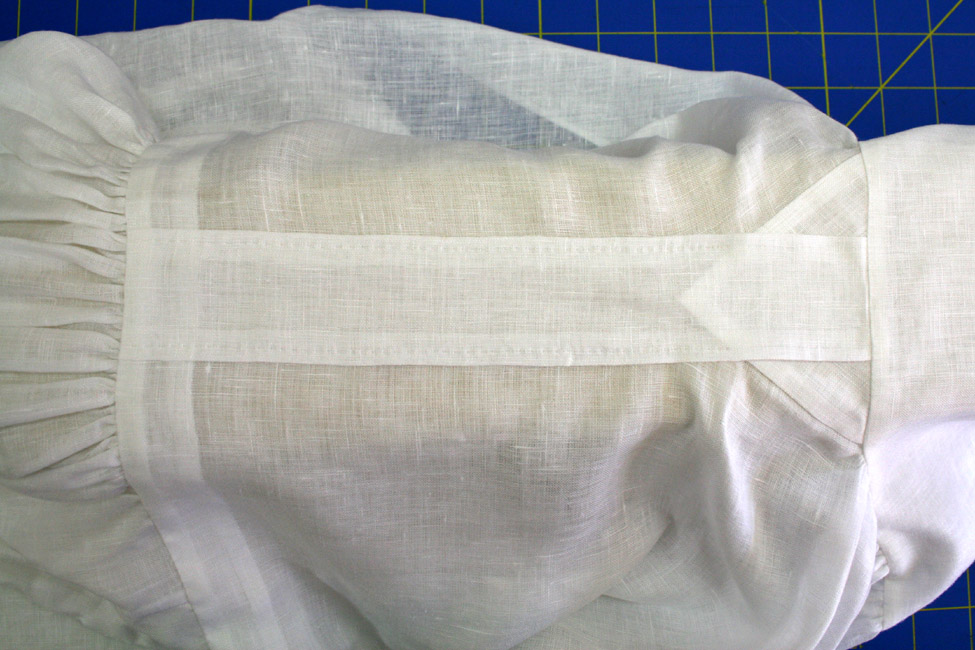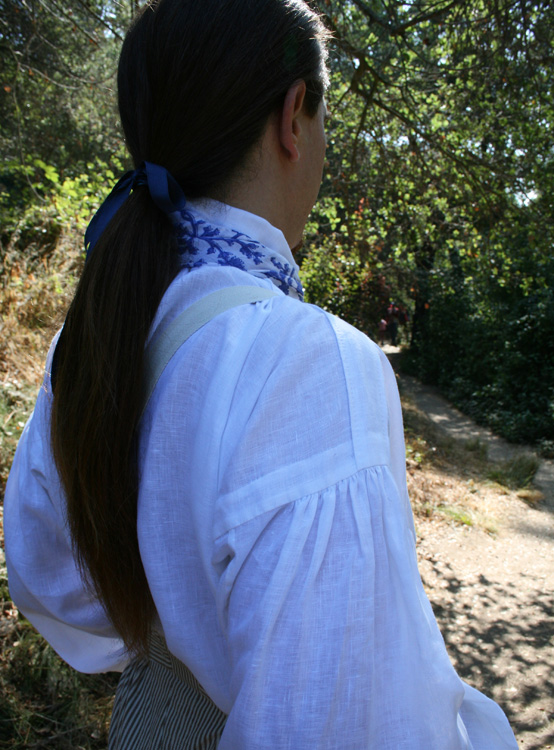
December 2011 – February 2012
A man’s shirt in fine portofino linen using Kannik’s Korner’s 1750-1800 shirt pattern.
I thought I had developed some facility working with sheer fabric. I sew nice, straight 3/16″ machine french seams consistently. But this pattern gave me a whole new perspective on the standards of the past with regards to shirt making. The instructions call for an entirely handsewn shirt. It is to be finished with 1/8″ flat felled seams. To achieve this, 1/4″ seam allowances are given throughout. Too much work!
Needless to say, I added seam allowances all around, and sewed using modern methods. However, I found it difficult to ignore the pattern’s historical methods completely. So the shirt ended up being largely handsewn. I flat-felled the seams: the first seam by machine, and the felling done to the inside by hand. It wasn’t difficult to make 3/16″ flat-felled seams. But I imagine that’s as small as I’ll ever go. The sleeve openings, hem slits, and gusset corners were hemmed, and those seam allowances carefully rolled to one side to avoid clipping into the fabric. (This is a way to avoid placing stress at these points). Gathering and basting, as well as other visible sewing, was by hand. For an 18thC shirt, this includes reinforcement pieces. So it ended up being quite an involved project. To some extent, I did use the pattern’s instructions, but also referenced the more straight-forward JP Ryan assembly method.

Those reinforcement pieces are particularly interesting. There are many layers to a man’s 18th Century shirt shoulder seam. In the above photo on the right, the collar is sewn to shirt. The shirt is then slashed at the neckline to accommodate a triangular neck gusset. A neck gusset lining is sewn underneath, so there are actually two triangles of fabric there. On the left, a gathered sleeve. The sleeve piece, sewn to the armhole seam, strengthens this area, lines and finishes the sleeve seam. On top of all of this, centered along the shoulder, a wide strap reinforcement piece is topstiched.
Interestingly, Aaron finds the cut of this shirt to be uncomfortable. I believe its the pull of the dropped shoulders combined with heavy sleeve gathers and reinforcement panels. He says it just feels weird.


